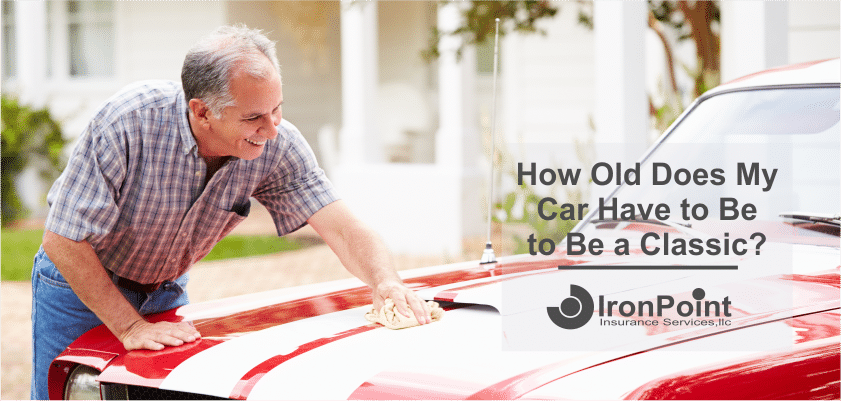When Is A Car Considered A Classic? What To Know Before You Buy

You’ve spotted a gorgeous vintage Mustang at a local car show. Or maybe that 90s-era BMW in your garage is starting to look less like a used car and more like a potential collector’s item. Either way, you’re wondering what truly makes a car a “classic” – especially if you’re looking to buy your first classic car. When is a car considered a classic, anyway?
It’s a question with surprisingly high stakes – especially for insurance, registration, and resale value.
Let’s settle this once and for all.
When Is A Car Considered A Classic? The 20-Year Rule (Sort Of)
Most car enthusiasts and insurance companies consider a vehicle “classic” once it hits the 20-year mark. That means cars from 2005 are now entering classic territory. (Feel that? It’s your youth slipping away.)
But the 20-year benchmark is just the beginning. Think of it as the minimum age requirement for entering an exclusive club. Getting past the velvet rope doesn’t automatically make you a VIP – and neither does having a manufacture date alone make a classic.
The Three-Point Classic Car Test
When is a car considered a classic? It needs to pass three crucial tests that separate the merely old from the genuinely classic.
1. Age: The Qualifying Round
Twenty years is the general starting point, but standards vary across organizations. The Classic Car Club of America recognizes cars from 1915-1948, while insurance companies typically use 20-30 years, and state DMVs usually require 20-25 years for special plates.
Your 2003 Honda Accord technically qualifies age-wise. But age alone won’t get you invited to Pebble Beach. It’s necessary but not sufficient – like having an ID to enter a club but still needing to impress the bouncer.
2. Condition: The Beauty Contest
A true classic should be well-maintained or restored to a condition that wouldn’t embarrass its original designers. This doesn’t mean it needs to be hermetically sealed in a climate-controlled chamber. Classics are meant to be driven.
But if your “classic” is more rust than metal, with mismatched parts and mysterious fluids leaking everywhere… you might just have an old car.
A thoughtful restomod can still qualify, though. These cars maintain their classic appearance while hiding modern reliability underneath – like wearing vintage Levi’s with a secret elastic waistband.
3. Significance: Not Just Another Pretty Grille
When is a car considered a classic based on significance? When it has a story worth telling. Some cars changed the world: the Ford Model T democratized transportation, the VW Beetle mobilized a generation, and the ’65 Mustang created an automotive category.
But significance isn’t just about world-changing impact. Limited production numbers, innovative design, and cultural relevance all count. Even the AMC Pacer has found classic status – not despite its quirky fishbowl design, but because of it. Sometimes being memorably weird is enough to earn a place in automotive history.
When Is a Car Considered a Classic? It Depends on Your State
Just when you thought you had it figured out, the government gets involved. Each state sets its own rules about when a car is considered a classic for registration purposes. Some states stick with 20 years, others hold out for 25 or 30, and a few have specific makes and models they recognize regardless of age.
Many states also have usage restrictions for classic plates. That “classic” designation often assumes you won’t be commuting in rush hour traffic or using the drive-through lane at McDonald’s. Check your local DMV before you order vanity plates reading “CLSIC93” – you’ll want to know exactly what restrictions come with that special registration.
The Language Barrier: Classic vs. Vintage vs. Antique
Car people love their terminology, and these terms often get tossed around interchangeably. But they’re not the same, and knowing the difference can save you from embarrassment at your next cars and coffee meetup.
- Vintage cars: Vehicles from the 1919-1930 era. Think rumble seats and running boards. These are the great-grandparents of modern automobiles.
- Classic cars: Vehicles at least 20 years old that have been maintained in original-ish condition. They make up the bread and butter of weekend car shows and enthusiast gatherings.
- Antique cars: Vehicles 45+ years old. These are the true seniors of the automotive world, representing significant steps in automotive evolution.
Understanding these distinctions helps you navigate the collector car world with confidence. It’s the difference between calling a 1965 Mustang “antique” (incorrect) and “classic” (correct).
When Is A Car Considered A Classic For Insurance? Follow The Money
Here’s where it really matters: insurance. Classic car insurance is often cheaper and better tailored to collector vehicles than standard policies. But when is a car considered a classic in the eyes of an insurance company?
Insurers look at multiple factors: how you use the vehicle (weekend joyrides, not daily commuting), where you keep it (garage, not street parking), its condition and modifications, and its collectible appeal. Our partner Hagerty can insure vehicles of practically any age, as long as they have collectible value and aren’t your daily driver.
The big advantage of proper classic car insurance? Agreed value coverage. Standard auto policies pay depreciated actual cash value if your car is totaled. But classics often appreciate. Agreed value ensures you’ll get the full, predetermined amount – a massive difference when your “old car” is worth more than your house.
True Classic Status Comes With Privileges
When is a car considered a classic? When it’s treated like one. A properly recognized classic gets several advantages that ordinary vehicles don’t enjoy: lower insurance rates with better coverage, special registration options in most states, exemption from some emissions requirements, invitations to exclusive shows and events, and perhaps most importantly, appreciating value (unlike nearly every other vehicle on the road).
But you need to protect that status with the right insurance coverage. Look for policies that offer agreed value coverage, flexible usage terms that match your actual driving habits, restoration coverage for works-in-progress, and spare parts coverage for those impossible-to-find components.
The Bottom Line On When A Car Is Considered A Classic
Age is just the starting point. A true classic combines age, condition, and significance – with a dash of cultural relevance that transforms a machine into something worth preserving.
When is a car considered a classic? When people turn their heads to watch it drive by, not because it’s falling apart, but because it’s falling together in all the right ways.
At IronPoint Insurance Services, we understand that your classic car isn’t just transportation – it’s a passion, a hobby, and maybe even an investment. We know exactly when a car is considered a classic and how to properly protect it.
Whether you’re ready to insure your first classic or looking for better coverage for your collection, we’re here to help. Have questions? Contact us or start a quote online.
After all, a car that’s earned its classic status deserves protection that’s a cut above ordinary auto insurance – just like the car itself is a cut above ordinary transportation.

Get a Classic Car Insurance Quote
Compare classic car insurance quotes and rates. We make it fast, safe, and secure.
- Let’s Get Started!
-
Have an Agent Call
- Compare Business Quotes
-
Business Owners’ Policy
-
Workers’ Compensation
-
General Liability
-
Commercial Auto
-
Cyber Liability
- Personal Insurance
-
Auto
-
Home / Condo / Renters
-
Motorcycle
-
Classic Car
-
Boat / Yacht
- Quote & Buy Online
-
Small Business Insurance
-
Mexico Auto Insurance
-
Pet Insurance
Call 1-877-334-7646 to speak with a insurance specialist
Key Takeaways:
- Age is just the start: most cars reach “classic” status after 20 years, but true classics also have condition and significance on their side.
- Definitions vary: states, clubs, and insurers each set different standards for what counts as classic, vintage, or antique.
- Insurance matters: classic car policies offer agreed value coverage and lower rates for vehicles used primarily for pleasure, not daily driving.